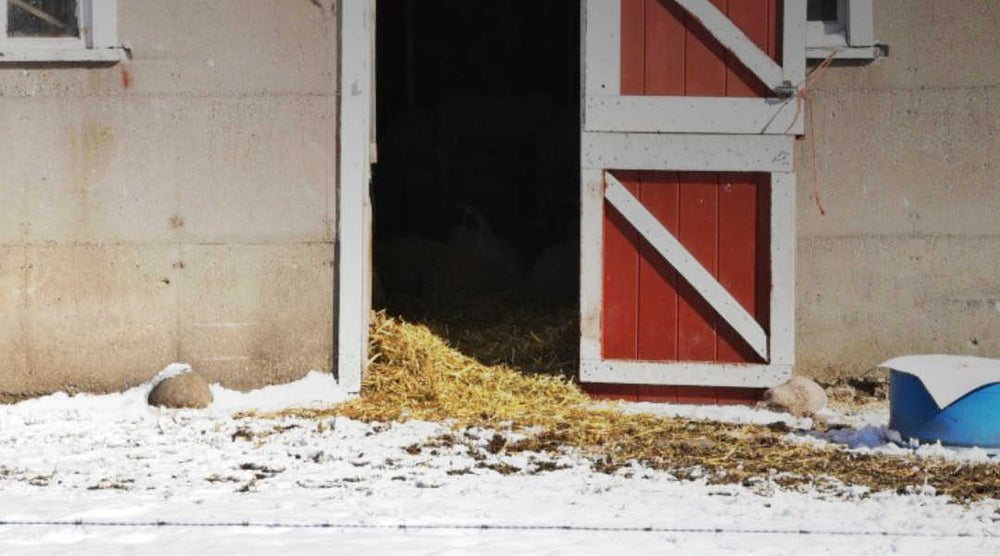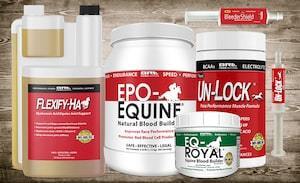
If you live in a climate where temperatures dip below freezing, then it may seem like ice is a given around your barn each winter. But ice and horses don’t mix, and too much ice can turn your barn and pastures into a hazard. These strategies can help you minimize ice around your barn, preventing injuries to your horses and keeping your staff safe, too.
Use Water Softener Salt Pellets
Ice melt can make ice disappear with a little time, but it isn’t the safest material to use when you have horses and other animals around. Ice melt isn’t always animal-friendly, and remember that any materials you use may run off into ponds or other water sources, especially when spread on roads or in pastures.
Instead of ice melt, opt for water softener salt pellets. They’re horse-friendly, easily accessible and easy to store, too. They’re just as effective as ice melt, and make a safer addition to your farm.
While water softener pellets will help to melt ice, don’t depend on them alone to take care of the issue. Snow removal will go a long way toward minimizing the ice, so your water softener pellets can finish the job.
Use an Ice Chipping Bar
As the ice starts to melt, you can speed up the process with an ice chipping bar. This isn’t an easy job, so reserve it for small areas where you need the ice gone pronto. You can find these bars in many outdoors and sporting shops; they’re good to have on hand in the winter. Be sure to wear eye protection!
Keep Sand Accessible
While melting and chipping away at ice is the most effective approach, it can be a massive task, and you won’t be able to get rid of all of the ice. If you need to make an icy walkway or other area safer, sand is key. Plan ahead by keeping a large amount of sand accessible throughout the winter. You may want to schedule a dump truck delivery of sand to create a sand pile, or even invest in a shed or other structure to house sand.
Sand liberally and often, especially in areas where horses or humans will be traveling.
Install Gutters
Preventing ice from developing is probably the most effective option, and it requires much less wintertime maintenance on your part. While it may be too late in the season to install gutters on your barn and buildings, doing so in the spring can prepare you for next winter.
Design your gutters so that they channel water to designated areas, rather than letting it pool around buildings where it will lead to ice buildup. Depending on your state’s laws, you may even be able to gather and use rainwater.
Maximize Pasture Drainage
Depending on the slope of your land, there’s probably little you can do about stopping water from running down into your — but you can maximize drainage so it doesn’t turn to ice. By increasing drainage in your pastures, you’ll decrease both the amount of ice and mud present, making them safer for horses.
There are a number of ways that you can manually increase drainage in pastures. Grid systems are one of the most effective. You can install a stability grid (such as a Lighthoof grid), cover the area with appropriate material (usually stone), and the grid will help to drain water away from the ground’s surface. These grid systems can be expensive, but they’re also a great — especially if you just need to target a problem area by a gate or water trough.
Preventing and treating ice can go a long way toward keeping your horses safe each winter, and it will be make for one less wintertime healthcare challenge in your barn.
Top trainers, owners and competitors rely on BRL Equine products to help their horses perform at their very best. You can get the same great results! Our all-natural equine nutritional supplements really work... guaranteed or your money back!





Also in Horse Tips and More
Top 10 Ways to Show Your Horse You’re Thankful For Him
November 01, 2021
View full article →
5 Ways to Prepare Your Barn For Summer
May 03, 2021
View full article →
Your New Spring Horse Health Checklist
March 12, 2021
View full article →